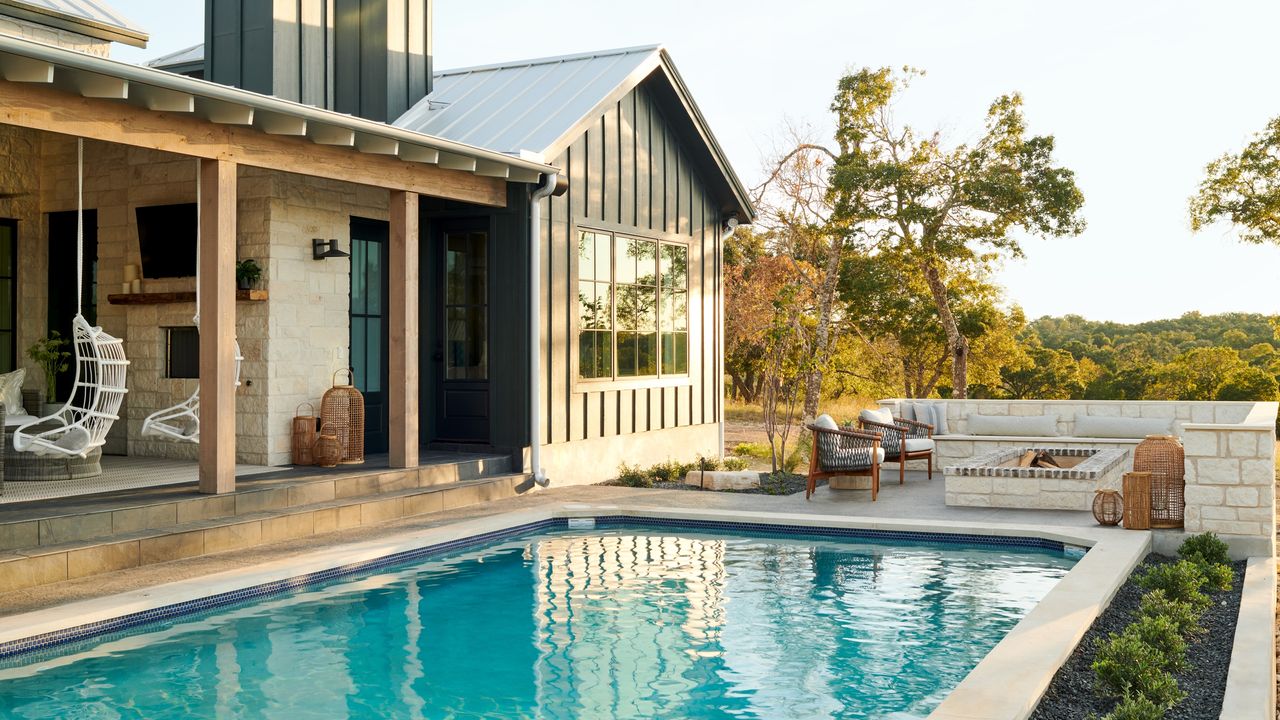
We're increasingly wanting to use our outdoor spaces like a full extension of our home, and clever garden divider ideas allow us to entertain, relax, and dine alfresco without physically building separate rooms.
Outdoor zoning is a modern garden idea that will elevate the function and flow through interconnected spaces. "Zoning your outdoor space isn’t just about aesthetics," says Kerith Flynn, principal at Margali & Flynn Designs. "It’s about giving every corner purpose and creating an organic flow, especially when your outdoor spaces become an extension of your home. Whether you're entertaining, gardening, lounging, or dining outdoors, delineating these areas brings clarity and calm to how you use the space."
Below, Kerith and a host of other sought-after designers reveal their top tips on garden divider ideas to unleash their full potential.
1. Make the Most of Transitional Pathways

A transitional path works to lead guests through different zones in your garden while also creating the opportunity to line it with pretty flowers or shrubs to elevate your landscaping ideas and create the perfect garden divider idea.
The space by Richardson & Associates Landscape Architecture above shows how the outdoor dining area and outdoor living room can be connected spaces, yet completely separate.
Principal Joseph Richardson says of the area: "Two patios — one for cooking and dining, the other for reposing around a fireplace — are connected via a walkway of pavers surrounded by river stone, which in turn are bordered by traditional boxwood, boulders, ornamental grasses, and perennial flowers."
The perfect mix of pretty and practical, whilst working as a clever 'partition' between the spaces.
2. Create Natural Borders With Plants
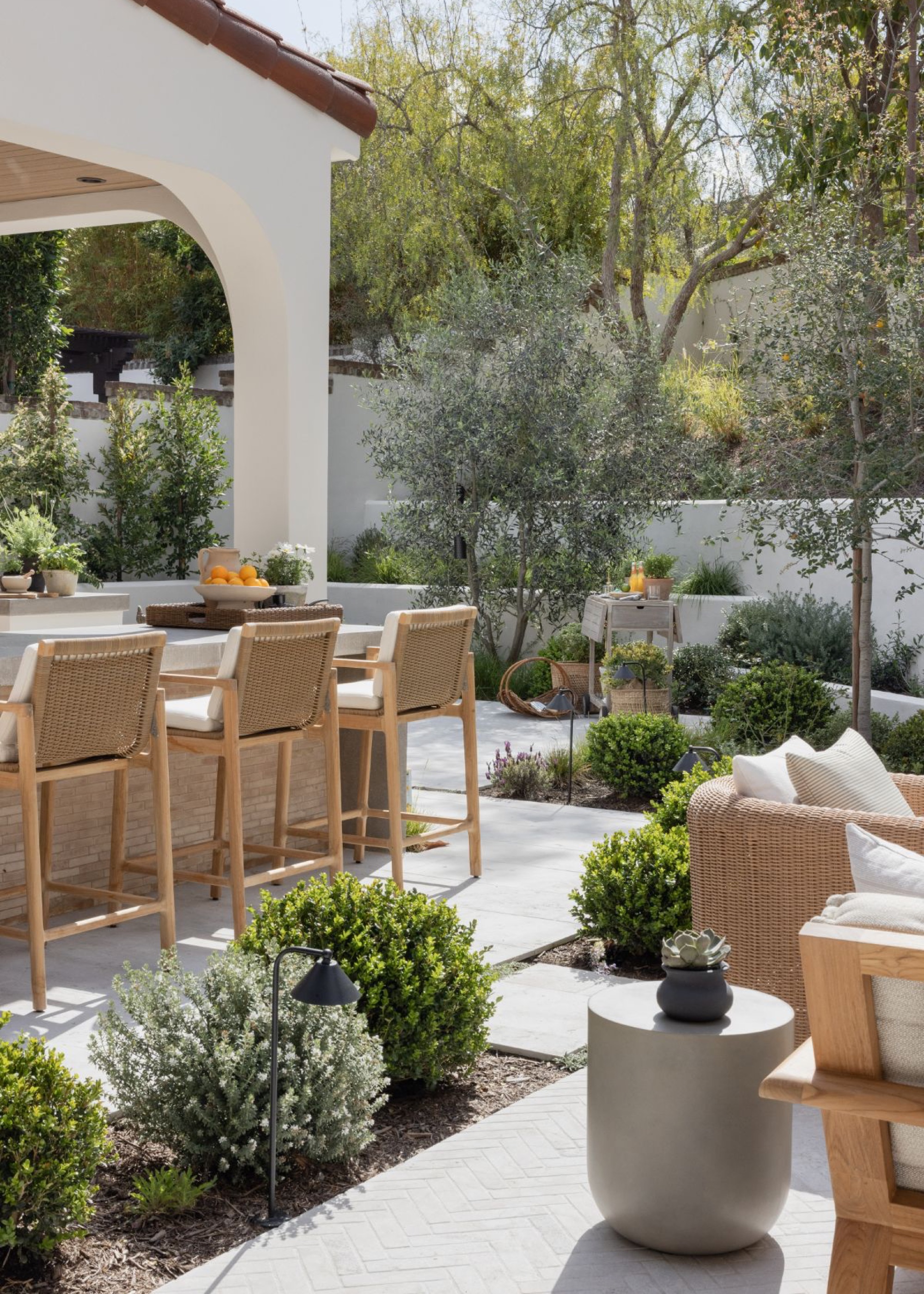
"Creating garden 'destinations,' as we like to call them, is all about thoughtful transitions that guide movement while still maintaining a sense of openness," says Christina Fenmore, Principal Designer at Garden Studio Design.
She explains that natural boundaries and garden dividers work to guide you through different spaces in the garden and separate them in a soft, soothing manner. Christina continues: "We avoid harsh dividers or heavy boundaries unless privacy is required, for example, around a wellness area or outdoor shower. Instead, we lean on subtle spatial cues to define each zone."
A series of ornamental shrubs defines the outdoor kitchen and outdoor living areas in the beautiful garden above.
3. Allow Different Materials Underfoot to Define Each Space
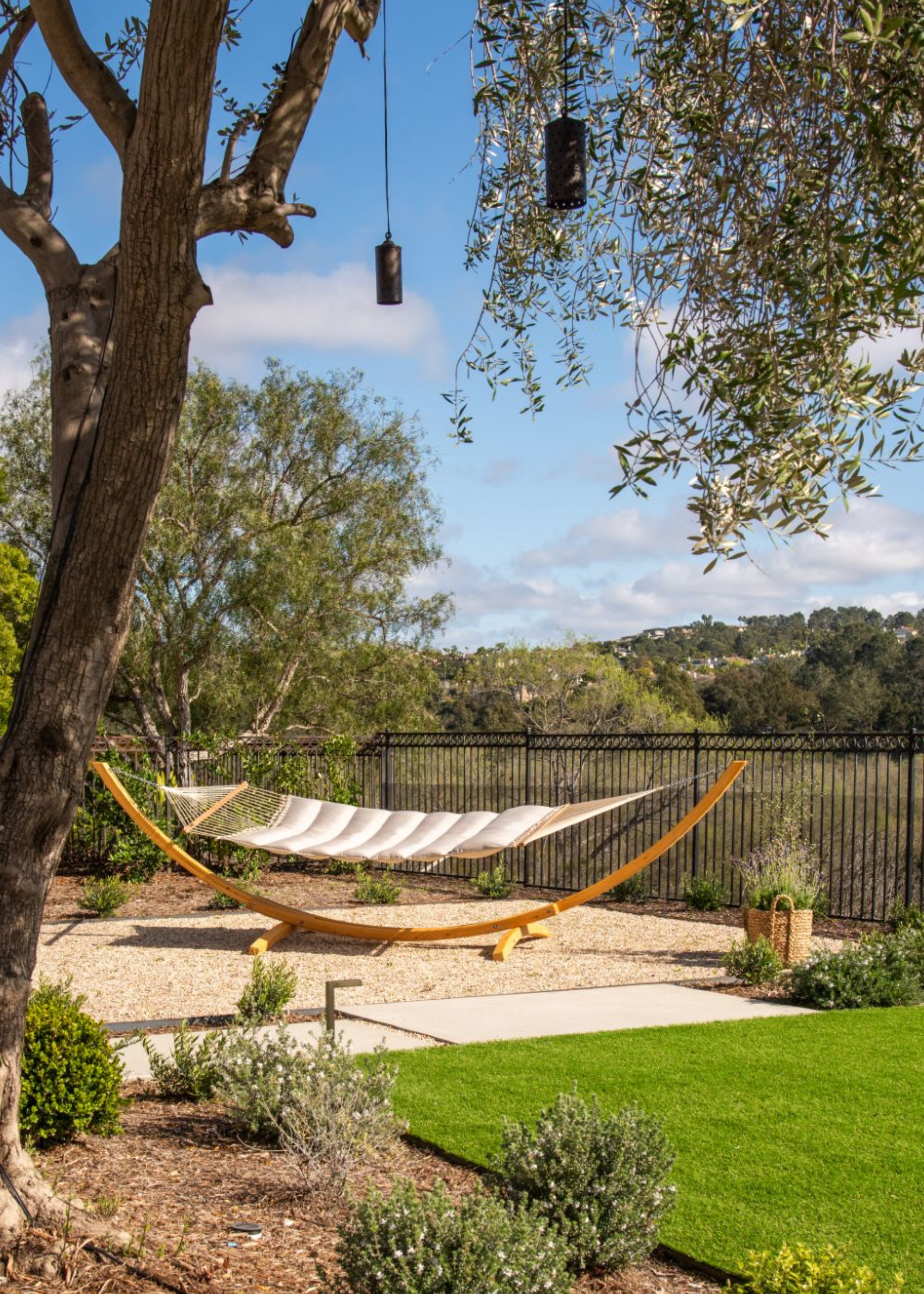
Changing the hardscaping materials underfoot can be a subtle yet definitive way to achieve those garden divider ideas. Stone slabs, pavers, tiling, decking, and gravel can all be used to define a space.
The chillout zone above shows a lawn space for playing and picnics that leads into a gravelled area that signifies a change of use of the space to 'chillout zone'.
"The foundation underfoot is especially key: changing the material between spaces, such as shifting from stone to warm-toned wood decking, can create the feeling of a distinct 'room' without physically closing it off," explains Christina Fenmore. "These transitions should feel intuitive, with pathways that gently connect one destination to the next, using complementary textures and tones to echo the palette of the home."
She adds: "It’s less about walls and more about flow; each space should feel purposeful, yet inherently connected."
The shift can be as subtle as a change in tile, with large slabs in an outdoor kitchen leading to parquet tiling in the same hue and material in the outdoor living room.
4. Build a Raised Deck for an Outdoor Living Room
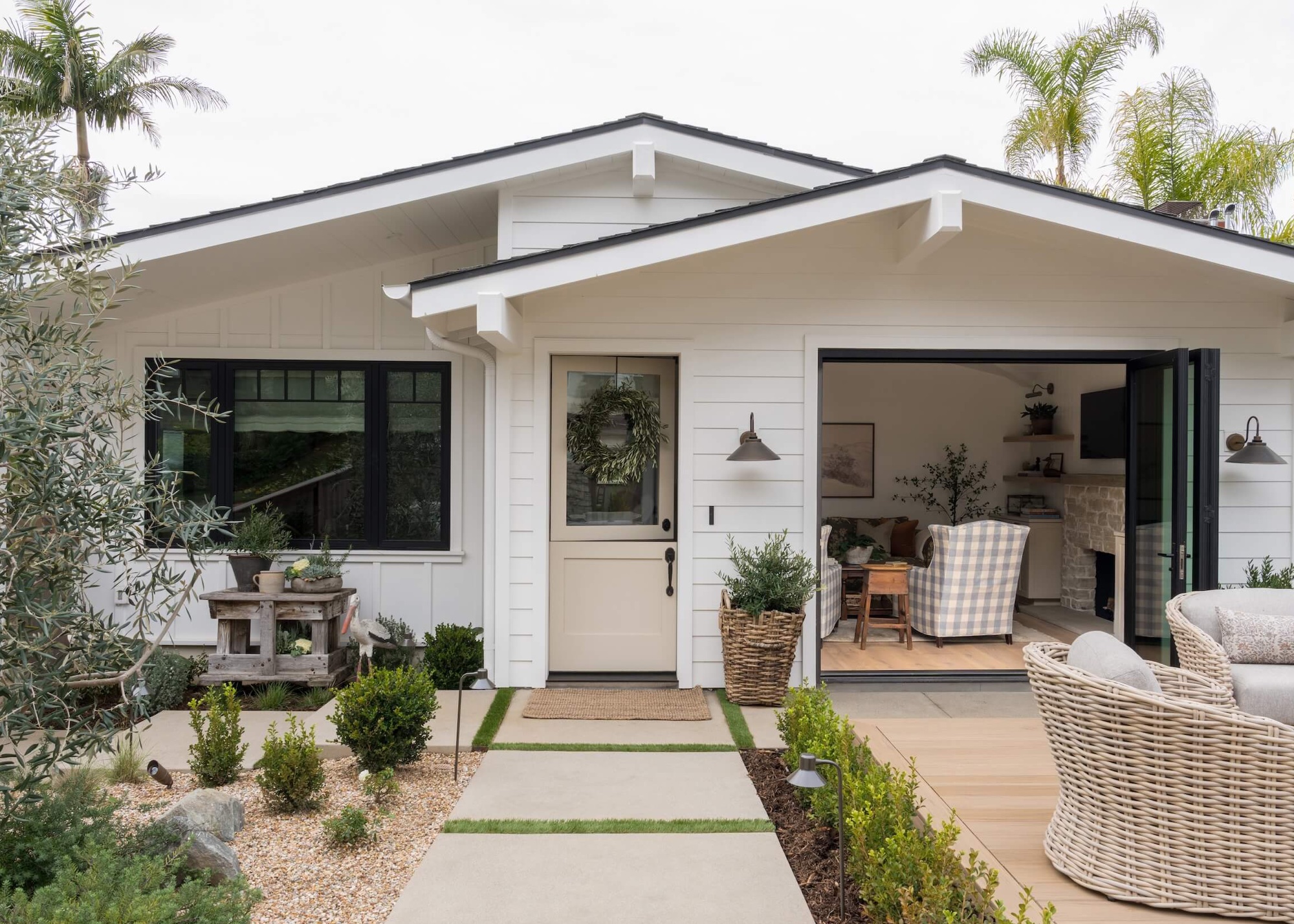
Raised decking ideas are a very effective way to create an outdoor living 'room' without walls and enhance those garden divider ideas.
Kerith Flynn, Margali & Flynn Designs, elaborates: "Hardscaping elements like decking and stone patios are essential for defining specific zones," she says. "A raised deck, for instance, naturally carves out a sophisticated lounge area from the lawn or planting beds."
A raised deck is also an excellent choice to define a poolside lounging area. On the deck itself, Kerith suggests taking the definition even further, explaining: "I always recommend using outdoor rugs and curated furniture groupings to further delineate each space. An outdoor rug instantly grounds a dining area or a sectional, providing immediate definition."
5. Lay Colorful or Patterned Tiling to Define an Outdoor Kitchen
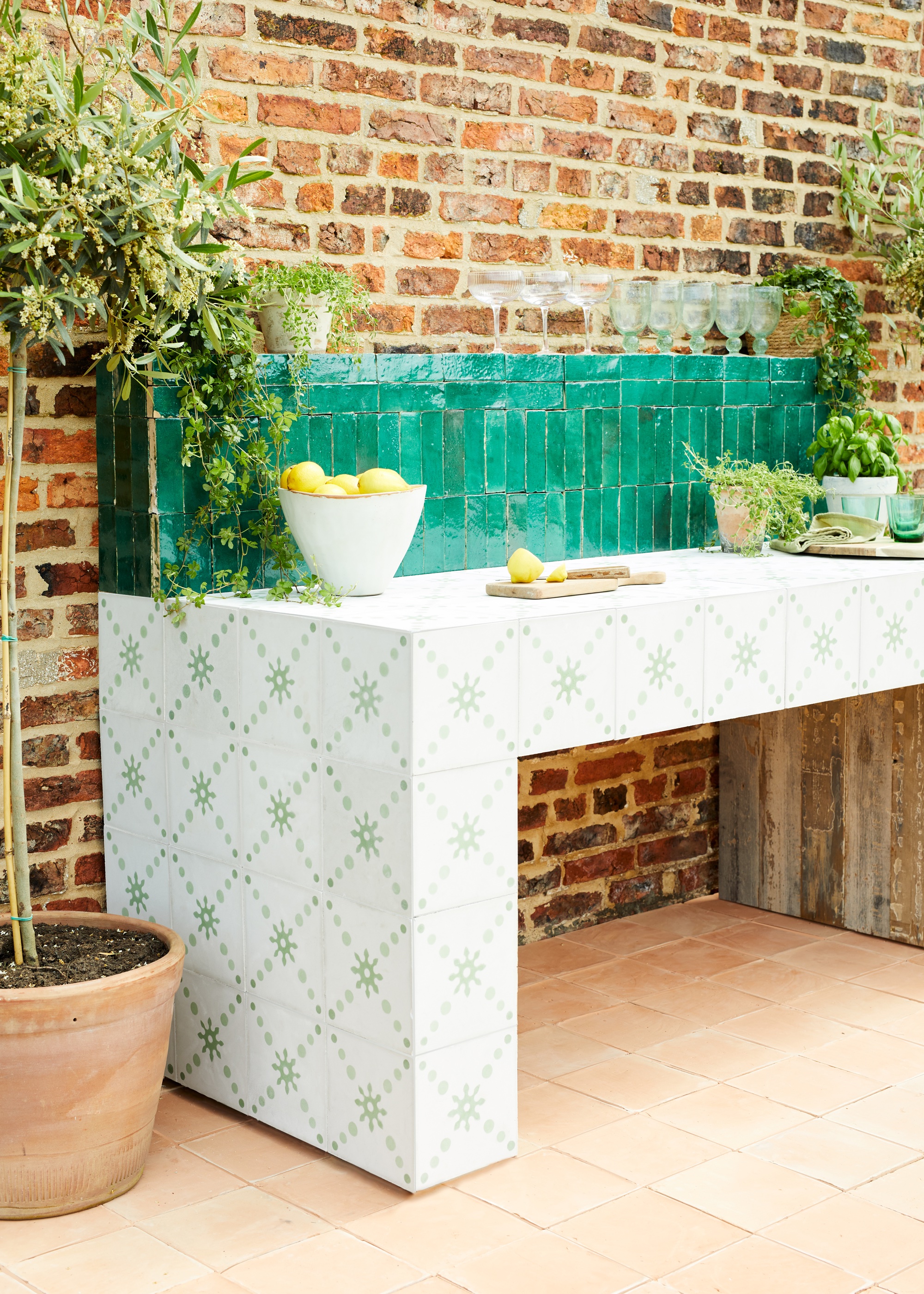
Tiling with color or pattern isn't just for your bathroom — it's a very effective way to create an outdoor 'room', whether it's bright floor tiles to highlight an outdoor shower area or a bright backsplash for an outdoor kitchen area, without the big build cost.
"Tiles are a simple yet striking way to define a space outdoors," comments Lee Thornley, Founder of Bert & May. "Statement tile partitions, such as a raised tile bed for an outdoor shower or a splashback behind a freestanding preparation counter, take away the need for unnecessary structural changes."
He adds, "Printed designs bring a freshness that works well outdoors. Not only can tiles zone a functional area, but they also add texture and visual interest, turning a practical surface into a design feature."
6. Try Tiered Landscaping
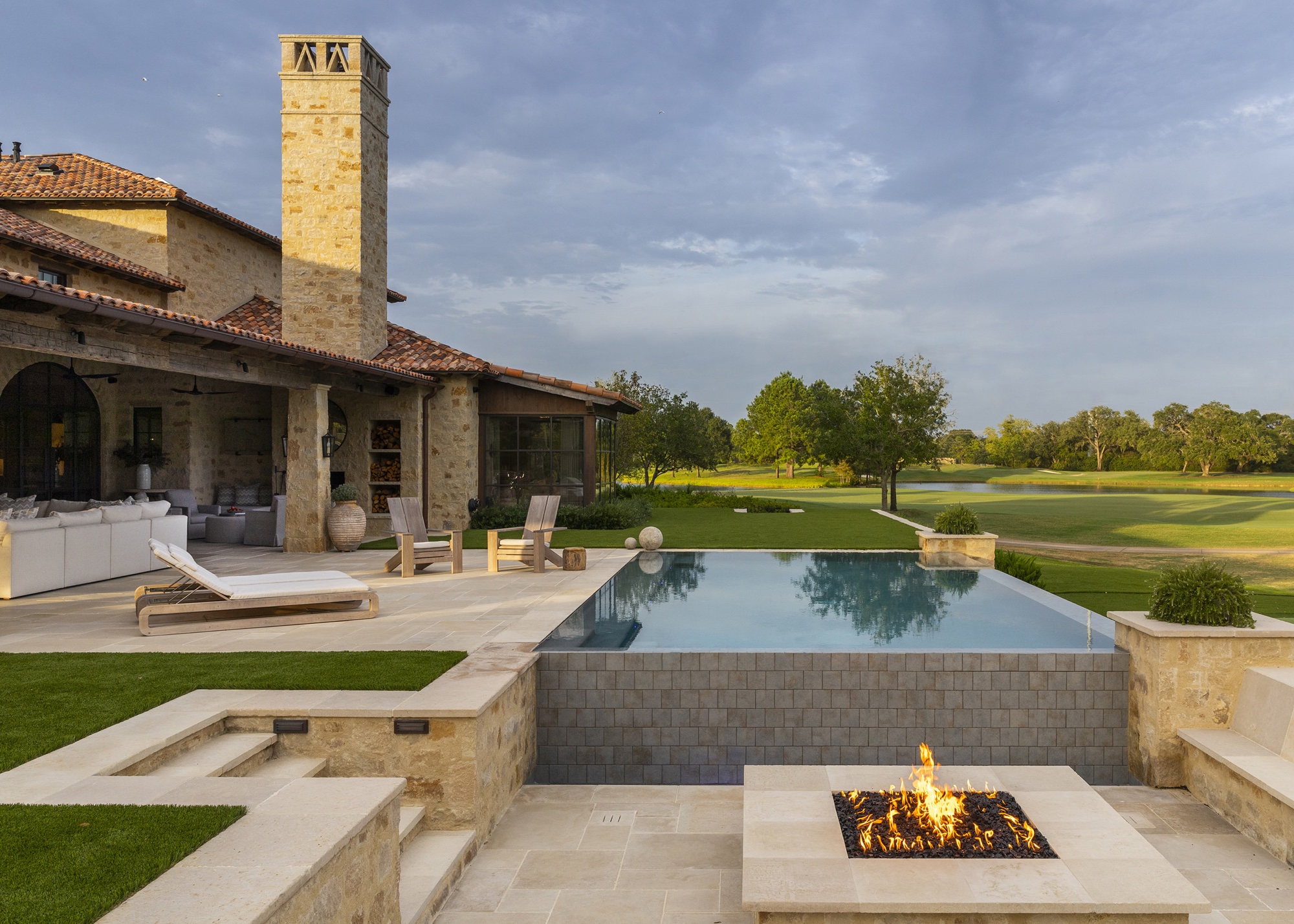
Garden divider ideas can be found in the form of tiered landscaping, where the garden is zoned into a couple of (or multiple) levels, allowing you to create specific areas for different functions without having to build high walls.
The separate entertaining areas can be used for swimming, relaxing, lounging, dining, entertaining, cooking, and more. In the luxurious space above, Ryan Street Architects wanted to design a landscape "as a sequence of outdoor experiences."
Principal Ryan Street says: "Stone, water, and lawn are used as structuring elements — not to contain, but to clarify. Each has its own purpose, gently defined by grade changes, low walls, or planting." He adds, "The pool and fire feature create an axis around which smaller gathering areas naturally form. These aren’t rigid divisions, but rather quiet invitations to linger."
7. Build Low Stone Walls That Double as Seating
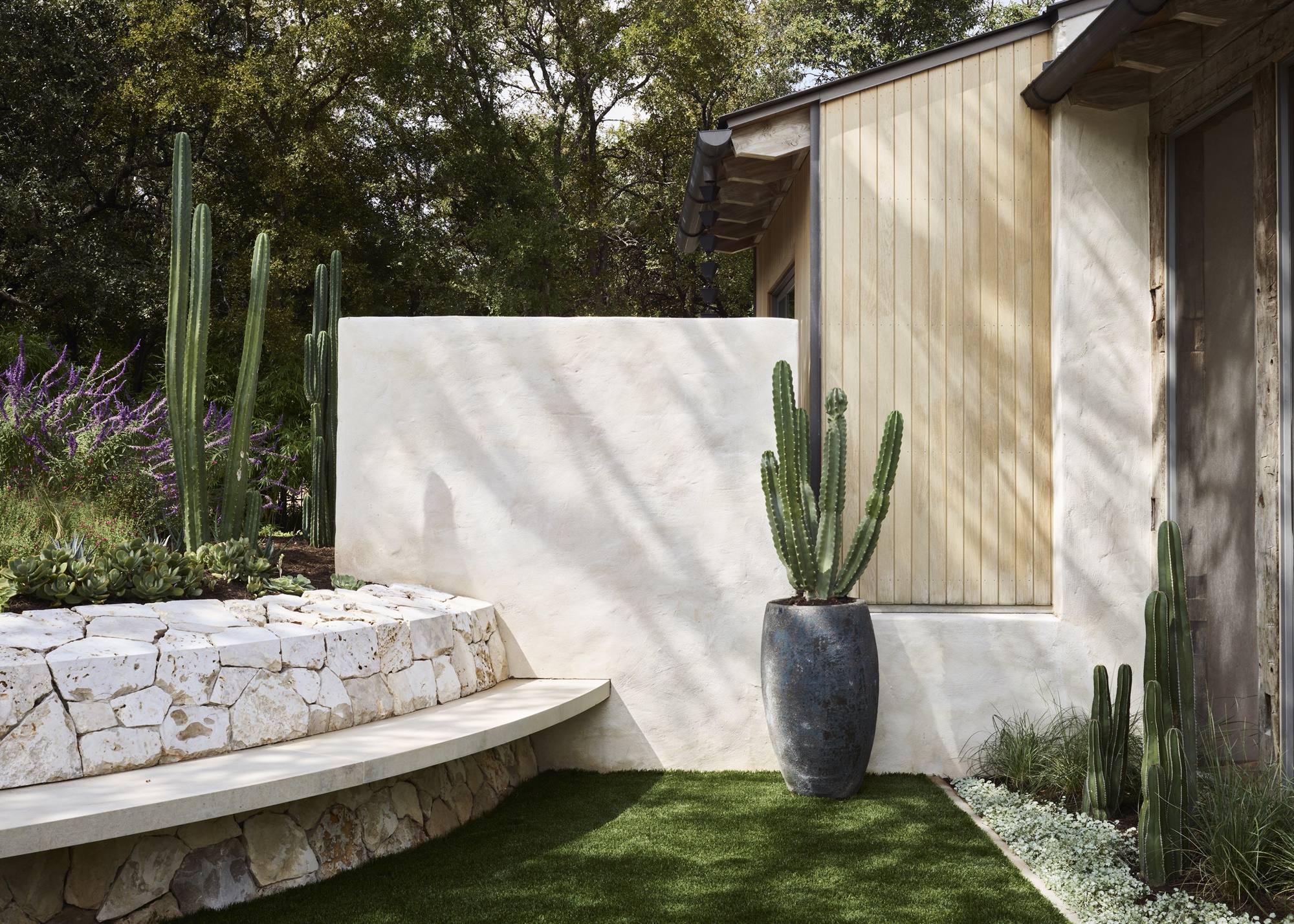
Built-in outdoor seating ideas can act as a clever garden divider idea that is practical as well as visually appealing, and defines the space while working within it.
Speaking about the tranquil rest area above, Ryan Street says, "Outdoor rooms don’t always require high walls. Sometimes, the suggestion of enclosure is enough. Soft stucco planes and curved stone benches subtly carve space without interrupting the natural flow of the garden.
"We rely on elemental materials like plaster, limestone, and patinated vessels to delineate space in a way that feels timeless and effortless. The partition becomes part of the landscape, never in opposition to it."
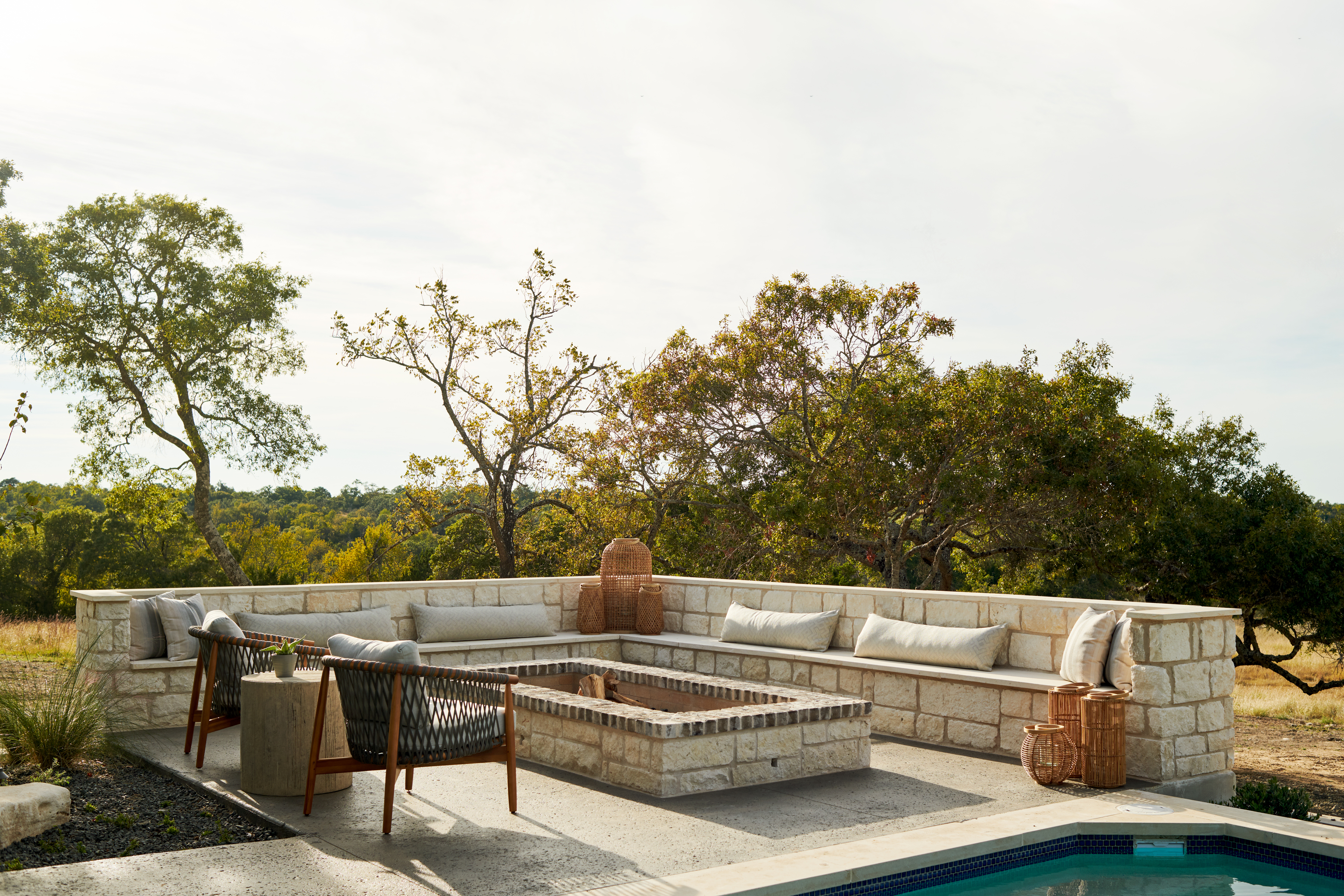
Linda Hayslett, of LH. Designs used stone seating to define a gathering space around a fire pit (seen above), which worked simultaneously to offer guests a place to relax as well as define the area.
8. Bring in Architectural Structures Like Pergolas
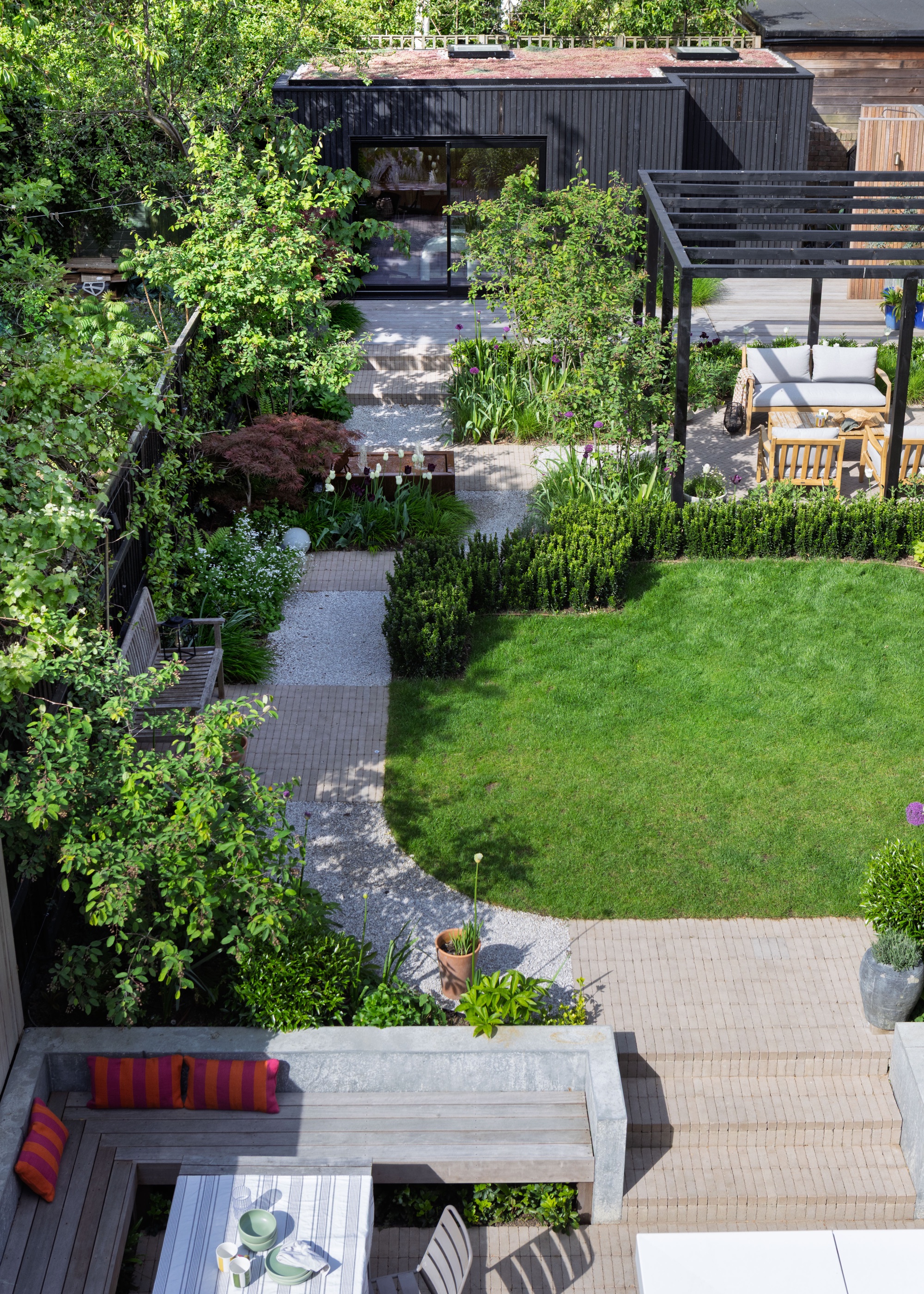
A more obvious way to create a garden divider is to construct a pergola to define a lounging or dining area.
Pergola ideas work to offer shade cover as well as to highlight that the space has a function within it, whether you choose to place a dining table underneath or an outdoor sofa. "We like to employ the strategic use of architectural elements, such as pergolas, to define a lounging zone," says Lauren Lerner, principal at Living with Lolo.
The perfectly zoned garden by GRDN Design (above) shows how the pergola distinguishes the lounging area. It also highlights many of the other clever partition tricks that work to create a cohesive space that offers different experiences via an interconnected journey.
Spot how the flooring changes to tiles when it's an area you can stop, sit, and relax, while the lawn offers a space to play and run around. The dining area closest to the house is also divided by concrete "walled seating" that highlights and separates the spaces.
9. Install a Linear Water Feature
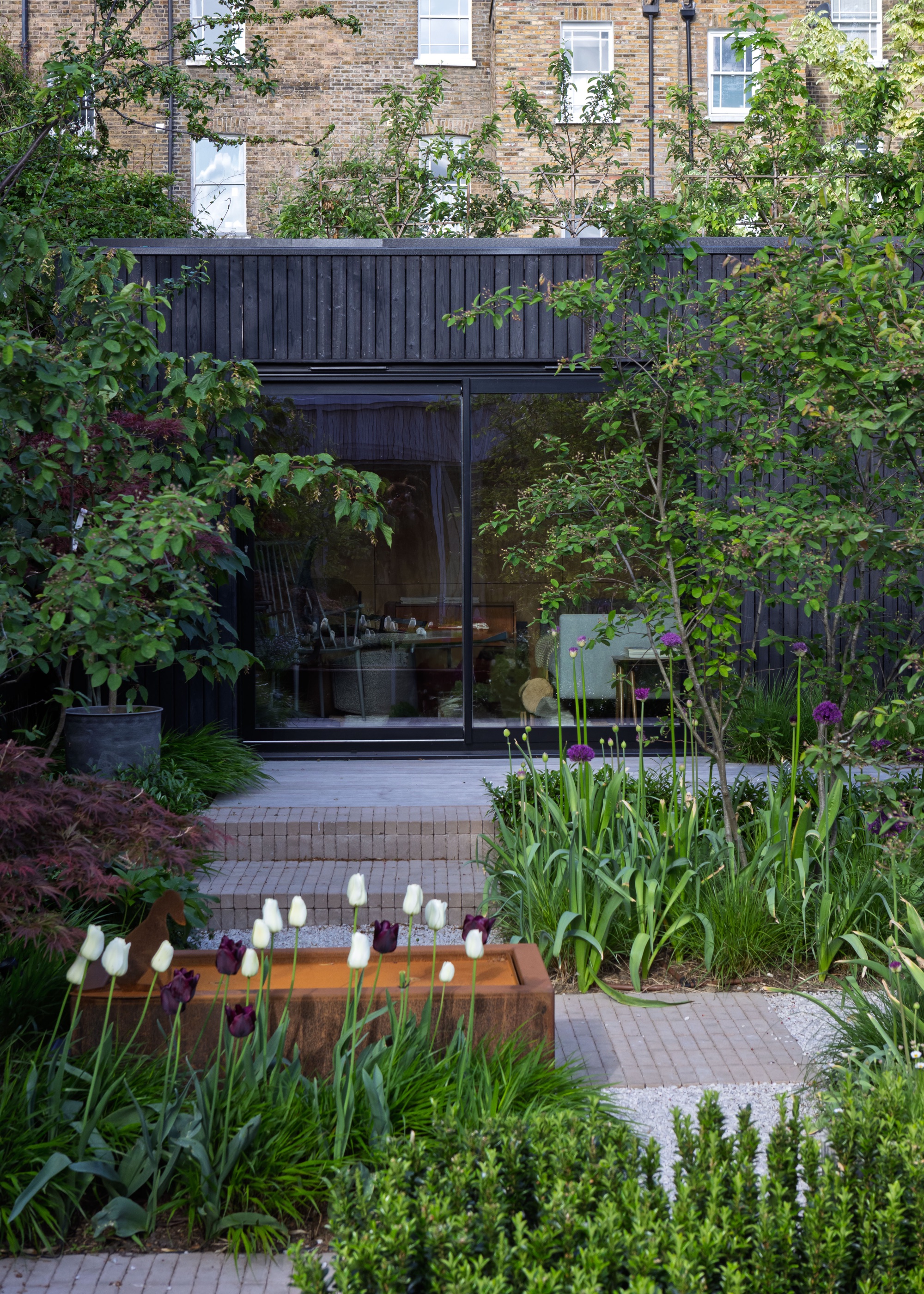
A closer look at this stunning space by GRDN Design shows how you can also use water garden ideas as a garden divider idea for your outdoor space.
This cool metal water feature sits next to the pergola and lounging area, further highlighting the area as a tranquil relaxation haven while also physically zoning it at the same time.
"Water features, like a linear fountain, can anchor a quiet, reflective zone," says Lauren Lerner.
FAQs
Why Should You Zone a Garden?
Zoning your garden allows you to maximize functionality, offering specific areas for entertaining, cooking, lounging, relaxing, dining, and more.
"Creating distinct 'rooms' in your garden is paramount for achieving a beautiful and functional outdoor oasis," says Kerith Flynn."Just as we thoughtfully space plan interiors, applying the same intentionality outdoors enhances visual appeal, improves flow, and simplifies maintenance."
Hardscaping, like stone patios, gravelled areas, low stone walls, and tiling, helps to define zones.
"For more subtle divisions, raised planters and raised beds are fantastic," continues Kerith. "They offer low-level separation while introducing vibrant color, architectural structure, and purpose. Lining them in a series can artfully guide the eye throughout the garden.
"A fire pit or fireplace is a true centerpiece, drawing people together and fostering a warm, social atmosphere. Position it as a dedicated gathering spot, or as a seamless transition between more formal zones like a dining patio and a sprawling lawn."
Creating a zoned garden will allow you to use the space with more intent, maximizing every inch of space, so use these garden divider ideas as your source of inspo and find yourself changing up even those urban garden ideas.







